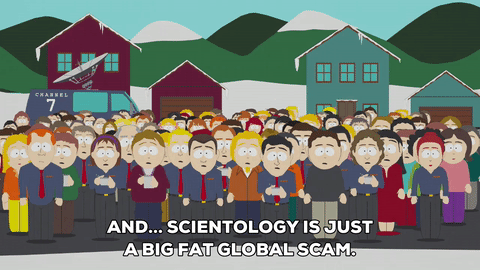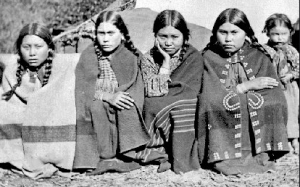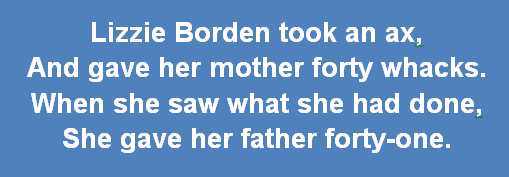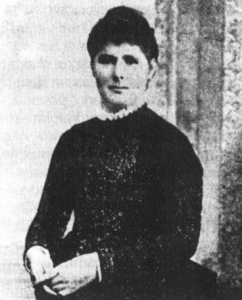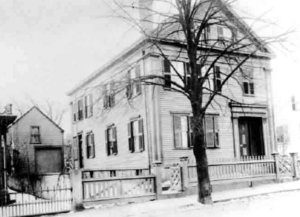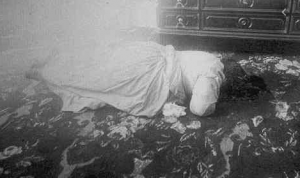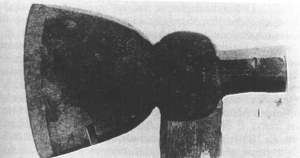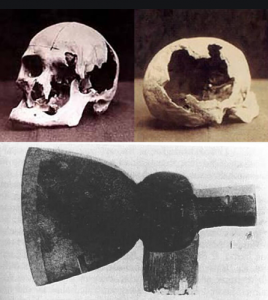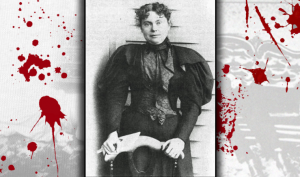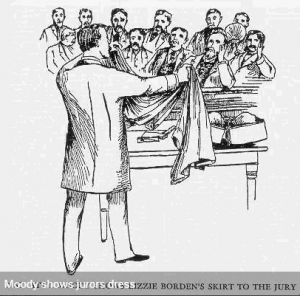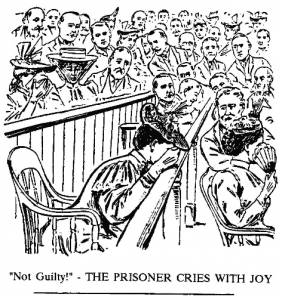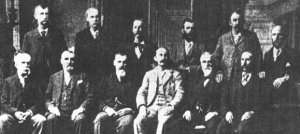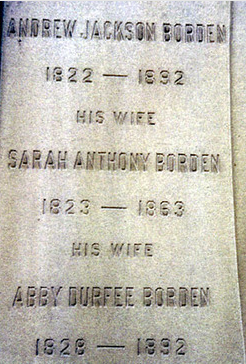 Scientology. Just the sound can send shivers through your spine. Likely, you already have a bad opinion about it. If you’re with the majority, you’ll think Scientologists are a brainwashing bunch with devious designs to con your cash. But if you’re with a small minority, you’ll see Scientology as a vastly misunderstood new-age religion offering you spiritual enlightenment, inner peace, and a path towards universal knowledge. Both these views can’t be right.
Scientology. Just the sound can send shivers through your spine. Likely, you already have a bad opinion about it. If you’re with the majority, you’ll think Scientologists are a brainwashing bunch with devious designs to con your cash. But if you’re with a small minority, you’ll see Scientology as a vastly misunderstood new-age religion offering you spiritual enlightenment, inner peace, and a path towards universal knowledge. Both these views can’t be right.
I knew nothing about Scientology except for Tom Cruise jumping on Oprah’s couch and John Travolta’s disastrously-bad flick called Battlefield Earth. It wasn’t until a few years ago that our then-fourteen-year-old son and I were cutting through mid-town Manhattan from Hell’s Kitchen to our hotel in Times Square. There, on our left along 46th, was the Scientology Church of New York City.
“Hey, look at that!” I pointed and said to Alan. “Scientology. Let’s check it out.”
“Da-ad…” Alan shook his head. “Everyone knows Scientology is a crazy cult and a big fat global scam.”
I looked down on him. “Whadda you know about Scientology?”
 “A guy called L. Ron Hubbard started it in the nineteen-fifties from a science fiction book, and he sucked hundreds of thousands of people into believing humans were planted on Earth seventy-five million years ago by a giant space alien named Xenu who was the evil tyrant ruler or dark lord of the Galactic Confederacy. Hubbard said Xenu brought zillions of early humans to this planet and blasted them with hydrogen bombs in volcano craters to free them of their souls which he called Thetans. Scientologists believe Thetans still hang around and use engrams to make people dumb, and if you pay their church enough money they’ll audit you with E-Meters and sell you books, counseling, and courses to clear you of bad stuff and help you reach Operating Thetan Level III where you’re supposed to know everything that’s secret about the universe. By then, they got all your money and screwed your mind.”
“A guy called L. Ron Hubbard started it in the nineteen-fifties from a science fiction book, and he sucked hundreds of thousands of people into believing humans were planted on Earth seventy-five million years ago by a giant space alien named Xenu who was the evil tyrant ruler or dark lord of the Galactic Confederacy. Hubbard said Xenu brought zillions of early humans to this planet and blasted them with hydrogen bombs in volcano craters to free them of their souls which he called Thetans. Scientologists believe Thetans still hang around and use engrams to make people dumb, and if you pay their church enough money they’ll audit you with E-Meters and sell you books, counseling, and courses to clear you of bad stuff and help you reach Operating Thetan Level III where you’re supposed to know everything that’s secret about the universe. By then, they got all your money and screwed your mind.”
“Whaat? That’s preposterous! Where’d you hear that?”
“South Park. They just did an episode on Scientology.”
“You don’t believe everything on South Park, do you? Look at how many times they killed Kenny.”
“Da-ad. South Park is satire. That’s what they do. Trash stupid idiots like Scientologists.”
“Well, I wanna see this for myself.” I headed for the door. “C’mon. We’re goin’ in.”
“O-kay, but I’m warning you.” Alan dithered four paces back. “First thing they’re going to do is show you around, then try sell you some of their shit and get you to join.”
We entered through the well-lit lobby leading into an expansive reception area. It wasn’t what I expected, although I had no idea what to expect. This place appeared first-class and professional in every way.
Immediately, Alan and I were warmly greeted by an attractive lady named Adriana who was the epitome of youth and exuberance. Adriana was conservatively dressed in casual business attire and her persona radiated with confidence and commitment. She asked a few comfortable qualifiers, then welcomed us on a personal facility tour.
Adriana explained the Church of Scientology was unlike any other organized religion. Always making eye contact with me, and trying to do so with Alan, Adriana led us through the Public Information Center and said her organization was all about spiritually enlightening people so they can live free and healthy lives. I noticed there was no mention of God or any reference to Christianity which is what I thought a church was all about.
Adriana took us through the Dianetics and Scientology Bookstore where a wall-to-wall materials guide chart offered “millions of published words and thousands of lectures” personally written and spoken by the organization’s founder, L. Ron Hubbard. I noticed a wall plaque with the message, “Free Introductory Lectures are Available. Come as Often as You Like. Bring Your Friends”. Then I sat, and Alan squirmed, through a short audio-visual presentation which was convincingly prepared and with no money spared in production.
 Adriana offered Alan and I more of her time. She guided us to the mezzanine overlooking the Chapel and invited us into the Field Activities Center. Here, Adriana said, Scientologists practiced ceremonies ranging from weddings to namings to commencements to funerals. To me, this appeared more of an intertwined family of individual betterment than a conventional religion where it was a parishioner’s blind duty to pray to an unseen supernatural deity and unquestioningly adhere to prescribed dogma. I remained open-minded, but I can’t say the same for Alan.
Adriana offered Alan and I more of her time. She guided us to the mezzanine overlooking the Chapel and invited us into the Field Activities Center. Here, Adriana said, Scientologists practiced ceremonies ranging from weddings to namings to commencements to funerals. To me, this appeared more of an intertwined family of individual betterment than a conventional religion where it was a parishioner’s blind duty to pray to an unseen supernatural deity and unquestioningly adhere to prescribed dogma. I remained open-minded, but I can’t say the same for Alan.
Adriana looked around, then quietly asked if we’d like a look behind the scenes at the Church’s operational area. I wasn’t going to pass that up, and Alan had no choice. We entered a room called the Testing Center. Here, newbies like us were exposed to an “introductory service” that allowed an “understanding of personal capabilities and a directional path toward spiritual awareness”.
Discreetly, Adriana let us know that Scientology had an entire array of life improvement courses beyond their basic books and lectures. I murmured that might be interesting. Alan gave me a hard left elbow, and we moved on to the Purification Centre.
 This was an unusual place. It was a cross between a gym, a video arcade, and a no-host bar. One wall was a massive mural of the Manhattan skyline. In front were these treadmill-like machines with personalized screens where you could watch Scientology films while hooked into earphones.
This was an unusual place. It was a cross between a gym, a video arcade, and a no-host bar. One wall was a massive mural of the Manhattan skyline. In front were these treadmill-like machines with personalized screens where you could watch Scientology films while hooked into earphones.
Adriana explained this room was a place where “preclears” could mentally and spiritually purify themselves of drug and alcohol toxins as well as psychological damage from misleading input due to conventional religious exposure. I said I could have used this when I used to work out with a hangover. Alan cringed, and we proceeded to the Guidance Center where one-on-one spiritual counseling took place.
Next, we followed our host to the third-floor Auditing Room. Here, for the first time, I saw a real live E-Meter. I was most curious as I’d never heard of this thing and, apparently, it was the mechanized heart of Scientology indoctrination.
 The official name for this testing device is an electropsychometer. It’s somewhat like a one-lane polygraph than measures your electrodermal activity (EDA) which is your galvanic skin reaction to controlled questions. Taking an E-Meter evaluation, I was told, was a first step in “auditing” a preclear before advancing in incremental Scientology stages.
The official name for this testing device is an electropsychometer. It’s somewhat like a one-lane polygraph than measures your electrodermal activity (EDA) which is your galvanic skin reaction to controlled questions. Taking an E-Meter evaluation, I was told, was a first step in “auditing” a preclear before advancing in incremental Scientology stages.
I asked Alan if he wanted to give it a whirl. He cowered as if hiding behind his momma’s apron with his thumb in his mouth. Adriana tactfully explained they didn’t conduct audits before a preclear was properly prepared. We left the E-Meter room for the Scientology Academy where budding Scientologists who’ve attained a “clear” state train to be “Auditors” themselves.
By now, we were a good half-hour into this place. Adriana seemed to be comfortable with this Canadian skeptic and his captive son. She offered us a rare opportunity. Adriana had the keys to L. Ron Hubbard’s original office on the executive floor.
 I wasn’t turning that down for a second. Neither could Alan. We rode the elevator and exited into a plush hallway with two massive wood doors at one end. I shoved Alan along behind Adriana. Slowly, methodically, and respectfully, she unlocked the boss’s private sanctuary and gave us passage.
I wasn’t turning that down for a second. Neither could Alan. We rode the elevator and exited into a plush hallway with two massive wood doors at one end. I shoved Alan along behind Adriana. Slowly, methodically, and respectfully, she unlocked the boss’s private sanctuary and gave us passage.
It was impressive, I’ll admit. The tastes were exquisite and the appointments classy. The Founder’s desk was an exotic hardwood with matching chairs padded in leather. To one side was a magnificent bookcase filled with bound editions and prized possessions. There was even the touch of fresh flowers in a vase, the scent of something mixed with soft music, and a glass statue of the Empire State Building.
I remarked that it wouldn’t be hard to spend time in this place. I thought Alan might vomit. Adriana smiled and agreed. She suggested we go back to the main floor’s bookstore where she wished to share some literature about the Church of Scientology.
Adriana produced two publications personally penned by L. Ron Hubbard. One was Dianetics – The Modern Science of Mental Health. The other was Scientology – The Fundamentals of Thought. She explained these were the two best groundings for initiation into the Church of Scientology, and we’d best start with the basics before moving on to more advanced material.
 During our time, Adriana was most inclusive of Alan. She acknowledged him throughout and treated him as a valued addition to the Church despite his junior age. Adriana reassuringly said everyone was accepted into the Scientology sphere without discrimination for age or race.
During our time, Adriana was most inclusive of Alan. She acknowledged him throughout and treated him as a valued addition to the Church despite his junior age. Adriana reassuringly said everyone was accepted into the Scientology sphere without discrimination for age or race.
Then, she proved Alan right. I could have the two books for fifty bucks and was encouraged to select more – preferably the whole series for a one-time discount. Alan kicked me, and I had to go into damage control, desperately trying to save face.
My comeback was that no other religious organization, that I knew of, outright profited from their works. Hell, I said, even the Jehovah’s Witnesses and Mormons gave their propaganda for free. I went so far as to say I bet if I walked into a Catholic Church they’d give me a complimentary bible.
Adriana fidgeted. She’d thought she’d built a solid report and a sale. Now, we were turning on her. I’ll give her credit, though, as she quickly compromised. She put away the two new copies of Dianetics and Scientology and came back with some used books with dog-eared pages. She offered a trade with a caveat. I had to give Adriana my email address.
Alan didn’t say a word as we departedly shook hands with Adriana. He remained mute as we moved through the hustle and bustle of Times Square. He stayed quiet as we rode to our 17th-floor room in the Marriott, and he never again mentioned our Scientology experience. Alan grinned, however, while he gamed as I laid on the bed and browsed through Dianetics and Scientology. #@!#$! – I was determined to figure out what made these guys tick.
The best I could find glean is L. Ron Hubbard was a depressed science fiction writer sick of scribing short stories for a penny-per-word. Another starving artist told Hubbard that, if he really wanted to get rich, he should start a religion. The light went on in Hubbard’s head when he realized the religious market was far bigger than Sci-Fi and that churches were tax-exempt.
Ron Hubbard capitalized on an earlier SF piece he’d been successful with. It involved a made-up space warlord he called Xenu from whom he’d developed the Thetan storyline of disembodied human souls seeded on earth in prehistoric times. Hubbard seemed to think that if it grabbed one small niche audience, it might work with a mass religious market, provided it was convincingly sold to the gullible.
 To sell the Xenu saga, Hubbard expanded the Thetan characters. He had to make them relate to living souls looking for guidance and meaning to life. Hubbard came up with a measuring stick he called Dianetics. That came from the Greek words dia, meaning through, and nous, meaning mind or soul – or what the mind or soul does through the body.
To sell the Xenu saga, Hubbard expanded the Thetan characters. He had to make them relate to living souls looking for guidance and meaning to life. Hubbard came up with a measuring stick he called Dianetics. That came from the Greek words dia, meaning through, and nous, meaning mind or soul – or what the mind or soul does through the body.
In 1950, Hubbard published his first edition of Dianetics: A New Science of Mind in the popular print magazine Astounding Science Fiction. The magazine title should have told people something about the content, but such is the power of belief. It took off and Hubbard had his ups and downs with the publicity.
He fell on financial frailty. By 1952, L. Ron Hubbard realized he needed a bigger vehicle to transport his Dianetics sales so he invented an organization around it called the Church of Scientology. That term also originated in Greek from scio, meaning knowing, and logos, meaning study of. Therefore, Scientology was the academic study of knowledge and Dianetics was its practical back-up to prove it right.
 It wasn’t long before two things happened. One was Scientology snowballed into a big deal with many post-war people rejecting conventional religion and moving towards new-age gurus. The other was Scientology began to make serious money which attracted the tax and law-enforcement folks.
It wasn’t long before two things happened. One was Scientology snowballed into a big deal with many post-war people rejecting conventional religion and moving towards new-age gurus. The other was Scientology began to make serious money which attracted the tax and law-enforcement folks.
By the 60s and 70s, Hubbard built his Scientology club into the proverbial well-oiled machine. He was a good delegator and allowed a committed downline to run day-to-day operations while he focused on pumping out new material. This included prolific writings which became Scientology scriptures and he filmed or recorded volumes of doctrine lectures.
Scientology got away on L. Ron Hubbard. It came under a lot of negative pressure – media, religious, entertainment, and legal bodies. His group’s defense modus operandi (MO) was aggressively litigating anyone who criticized the Church of Scientology. That included dissenters within the organization, outside religious competitors, and the United States Internal Revenue Service. Some suits Scientology won. Some they lost. And one big one with the IRS was settled with Scientology secretly paying back taxes and being allowed to carry on as a “not-for-profit recognized religion in the US. This was despite almost every non-banana republic seeing Scientology as a purely commercial enterprise bordering on criminal fraud.
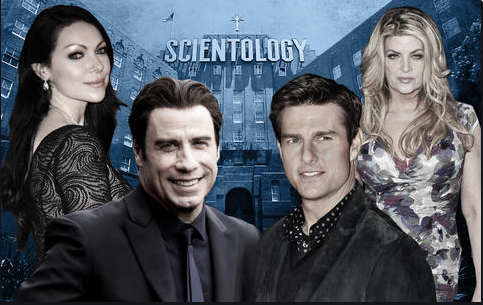 Ron Hubbard was a marketing guy if he was nothing else. He recognized the power of celebrity status as a force-multiplier, and he turned his recruitment sights on Hollywood. Over the years, A-listers like Travolta and Cruise championed the cause and were joined by names like Kirstie Alley, Lisa Marie Presley, and Leah Remini who turned out to be a twenty-first-century public relations disaster for Scientology.
Ron Hubbard was a marketing guy if he was nothing else. He recognized the power of celebrity status as a force-multiplier, and he turned his recruitment sights on Hollywood. Over the years, A-listers like Travolta and Cruise championed the cause and were joined by names like Kirstie Alley, Lisa Marie Presley, and Leah Remini who turned out to be a twenty-first-century public relations disaster for Scientology.
You can’t dispute Scientology’s financial and congregational success during the 50s through 90s. Figures are foggy, but it appears they amassed well north of the billion mark in assets, much of that liquid cash. Scientology also asserted a prominent presence around the globe and claimed a multi-million membership.
All empires have their rise and fall. L. Ron Hubbard was an internationally-charged criminal fugitive by the 1980s. By unofficial accounts, Hubbard died on January 24, 1986. He was alone, hiding in a filthy room on a secluded California ranch with matted hair and rotten teeth.
However, L. Ron Hubbard was smart enough to earlier evoke an attrition plan. Back in the 60’s, he mentored a protégé named David Miscavige who now heads the Church of Scientology. Now, here’s a slick little operator – he makes Tom Cruise look tall and a novice actor. Just watch the promo videos. David Miscavige comes across as the smoothest and most sincere televangelist to hit the screen since Tammy Faye died and Jimmy Swaggart cried.
David Miscavige is far from fart-free. He has a tremendous albatross hanging over his head, and that’s because his wife, Michele Miscavige, has been missing since 2007. It’s been twelve years since anyone’s seen hide nor hair of her.
But, David Miscavige has been a force in holding the Church of Scientology together through its troubles. Miscavige fought off crushing collaborative claims of Scientology being a crazy cult and a big fat global scam. Despite Miscavige’s ministering, Scientology’s future is uncertain. Membership is way down despite grossly exaggerated claims on its website.
Scientology’s biggest threat is itself. It’s also the power of the internet that leaves Scientology vulnerable to exposure beyond is litigious control. Today, people are far more in-tune, connected, and less likely to accept recruitment pitches without first fact-checking. That’s an Achilles Heel to the Church of Scientology.
So, is the Church of Scientology a crazy cult and big fat global scam? Let’s look at a couple of things starting with the Scientology website and how they present their position.
If you click on Scientology.org, you’ll enter a first-class site that has a lot of money invested in it. There’s nothing apparently misleading, on the surface, and the information walks you through what they present as a world-leading movement addressing “the spirit – not the body or mind – and that Man is far more than a product of his environment or his genes”.
Hold it. “Man?” As in male? When you page through Scientology’s website, you can’t help but notice it’s written in the masculine. That, in its self, should tell you something – particularly if you’re female or other non-male identifier.
The website section What Is Scientology? continues with this: “Scientology comprises a body of knowledge which extends from fundamental truths. Prime among these are:
- Man is an immortal spiritual being.
- His experience extends well beyond a single lifetime.
- His capabilities are unlimited, even if not presently realized.
Scientology further holds Man to be basically good, and that his spiritual salvation depends upon himself, his fellows and his attainment of brotherhood with the universe. Scientology is not a dogmatic religion in which one is asked to accept anything on faith alone. On the contrary, one discovers for himself that the principles of Scientology are true by applying its principles and observing or experiencing the results. The ultimate goal of Scientology is true spiritual enlightenment and freedom for all.”
 The site information continues to explain that Scientology is a workable technology. It’s a methodology that draws on 50,000 years of wisdom bridging Eastern philosophy with Western thought. According to Scientology promotional literature, this religion is something a “Man” does to better himself.
The site information continues to explain that Scientology is a workable technology. It’s a methodology that draws on 50,000 years of wisdom bridging Eastern philosophy with Western thought. According to Scientology promotional literature, this religion is something a “Man” does to better himself.
The official Scientology website doesn’t say exactly how a “Man” does this, but it does pay particular homage to L. Ron Hubbard. The site claims Hubbard was the first to scientifically isolate, measure, and describe the human spirit. Hubbard block-quotes like this frequent the site as credibility:
I dug deep into Scientology’s website. Nowhere did I find any reference to Xenu and the soul-seeding story. However, they’re quite open about their term Thetan which, they say, is a spiritual state of being oneself. They refer to achieving levels of Operating Thetan that are self-reliant existence. The information indicates that the higher the Operating Thetan level (which seems to go from one to maybe even eight) the more spiritually aware a Scientologist is and the more influence they have on those below them.
To me, it sounds a bit like a multi-level marketing organization or pyramid scheme. I had a brush with Amway in a former life. Amway makes really good soap, but I was uncomfortable with their psychological system. While I don’t believe there’s anything crooked at all about Amway, my experience was it’s definitely a clique that rewards and promotes top sellers while shunning low-performers. Amway makes no bones that it’s a free-enterprise outfit bent on making the all-American buck.
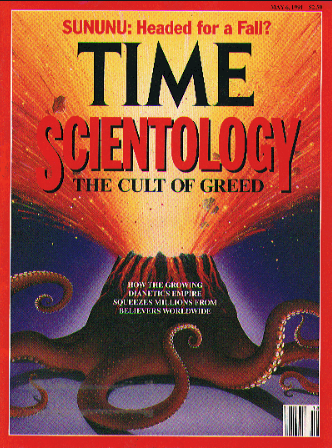 I’m not so sure about Scientology. On one hand, Scientology proudly describes itself as a religion. By definition, religion structures are not-for-profit applications that enjoy tax breaks. On the other hand, if you go through the Scientology site, there are scads of products and services for sale like books, lectures, films, and online courses. Most have prices attached, and this is clearly for profit.
I’m not so sure about Scientology. On one hand, Scientology proudly describes itself as a religion. By definition, religion structures are not-for-profit applications that enjoy tax breaks. On the other hand, if you go through the Scientology site, there are scads of products and services for sale like books, lectures, films, and online courses. Most have prices attached, and this is clearly for profit.
In my opinion, Scientology seems far more cult-like than soap-selling Amway that doesn’t claim to be, or flagrantly flog, religion. There’s no doubt Scientology has a hidden agenda and operates on a bait-and-switch method. That’s precisely what Adriana was doing with Alan and me. She carried on with follow-up emails until I blocked her.
I did some Googling and found lots of stuff about cults. Some are/were dangerous public menaces like the Branch Davidians who shot-it-out with the ATF in Waco, Texas. Others are more nuisances like Hari Krishna and door-knocking J-Dubs. To see if Scientology fits within the classic cult framework, I sourced this checklist from Skeptic Magazine’s 2011 article on cults. True cults have these characteristics:
- Veneration of the leader
- Inerrancy of the leader
- Dissent is discouraged
- Truth is absolute
- Morality is absolute
- In-group/out-group mentality
- Ends justify the means
- Deceit and hidden agendas
- Financial and/or sexual exploitation
- Mind-altering practices
- Lack of accountability
- Isolation from friends and family
- Aggressive recruitment practices
- Persuasive techniques
I’ve spent a lot of time researching Scientology for this post and, to me, this “religion” checks off most of the boxes. If Scientology is not a cult, then nothing is a cult, and the term has no meaning.
Is Scientology a Crazy Cult?
If you accept that Scientology is a cult, then you have to wonder how crazy their beliefs and methods are. I couldn’t find anything whatsoever on the Scientology site about Xenu, the galactic warrior, but there are many, many accounts from ex-Scientologists corroborating this as being slowly divulged as a Man rises through Operating Thetan levels.
But, I did see an E-Meter with my own eyes and have to say this is the biggest bunch of pseudoscience bullshit I’ve ever encountered. To think an “auditor” can read you by asking controlled questions while you hold two steel cylinders is crazy. When you apply this craziness within a cult, it certainly meets the criteria for step one.
Is Scientology a Big Fat Global Scam?
This is step two of analyzing Scientology. There’s no question it’s big. In fact, at one time Scientology was enormous. Today, it seems to be losing ground with diminishing membership, weak recruitment, and cash-flow issues which cause Scientology administers to trim the fat where they can.
But, is Scientology a scam? That’s a subjective question, as Scientology legitimately provides material products and services while charging a fee. While that takes Scientology out of the true religion arena – and that’s for the revenuers – it still lets a person pay-to-play if they so choose.
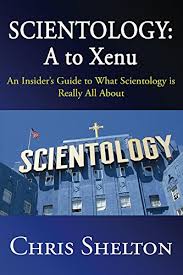 Stop. If Scientology is a real cult, then how much individual choice and free will does an indoctrinated individual have once they’ve swallowed the Kool-Aid? Very little, as most recovering Scientologists attest. You’ll find all kinds of internet support sites to deprogram the Scientology-brainwashed and help them readjust to normal life.
Stop. If Scientology is a real cult, then how much individual choice and free will does an indoctrinated individual have once they’ve swallowed the Kool-Aid? Very little, as most recovering Scientologists attest. You’ll find all kinds of internet support sites to deprogram the Scientology-brainwashed and help them readjust to normal life.
Websters Dictionary describes a scam as “a fraudulent or deceptive act or operation“. Putting it in context, it’s one thing to try sell someone like me fifty dollars worth of worthless stuff that I fundamentally disagree with and simply refuse. It’s something else to suck an innocent and vulnerable person into draining their bank account and pledging total subservience.
In my mind, Scientology, at its core, is founded on dishonesty and deceit. That makes it a scam. I think the founding story of alien intervention and the current practice of auditing with an oscilloscope is crazy. I also think Scientology is a secular and restrictively-inclusive global enterprise – a cult – that may still be fat with riches.
In that case, Alan was right. Scientology is a crazy cult and a big fat global scam.








